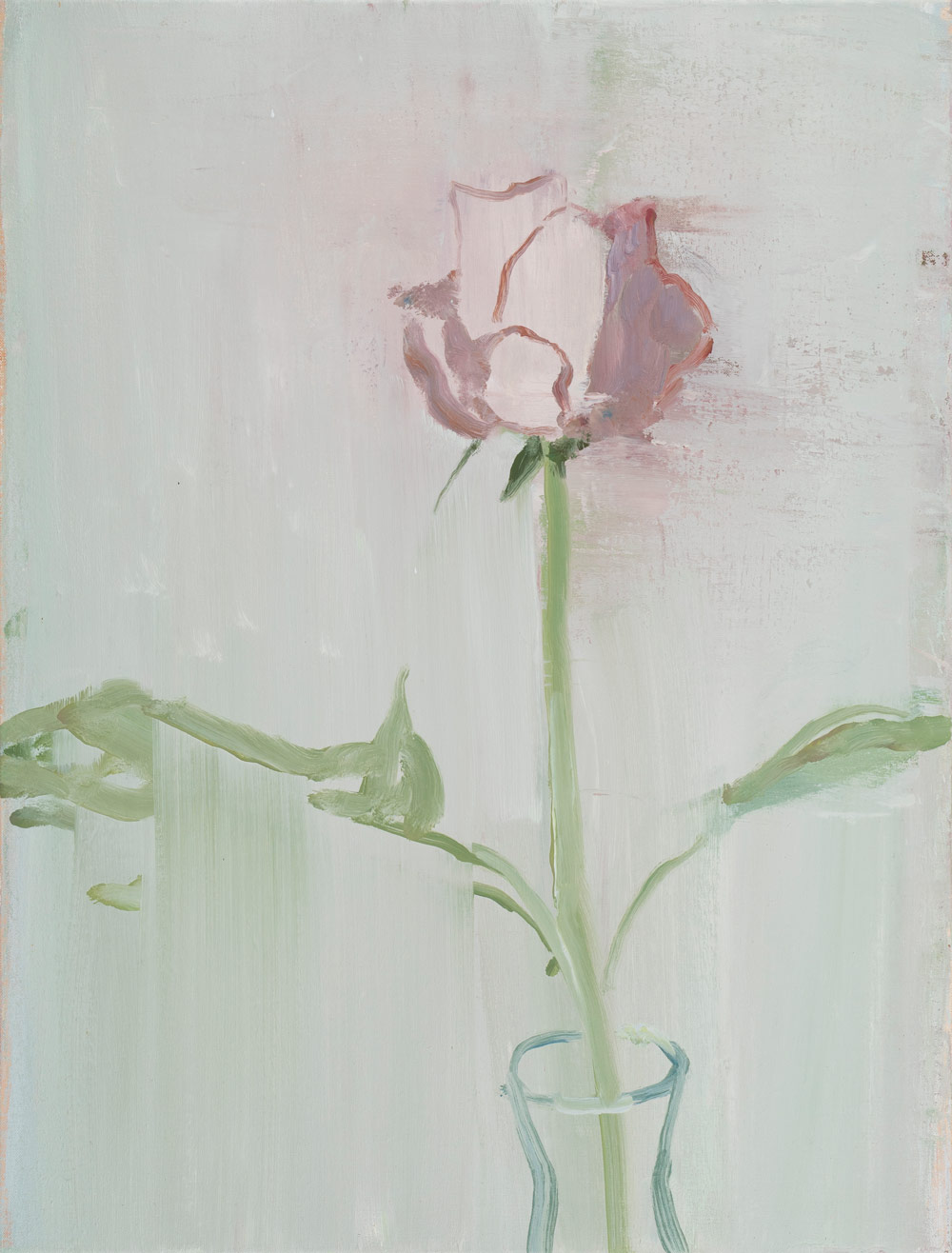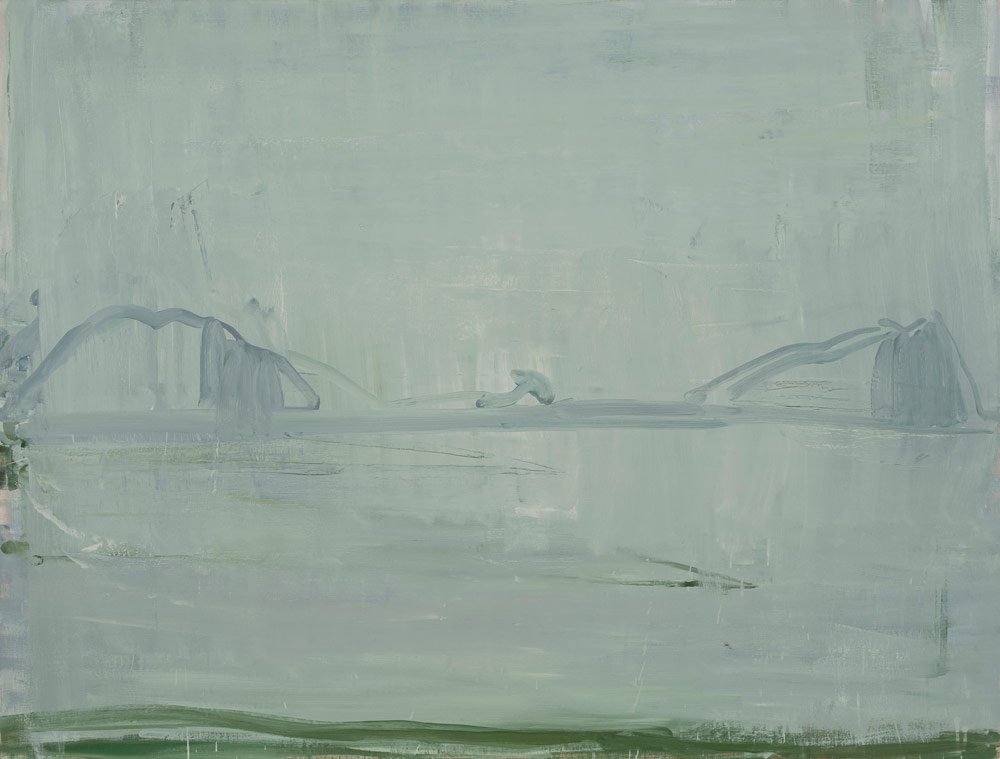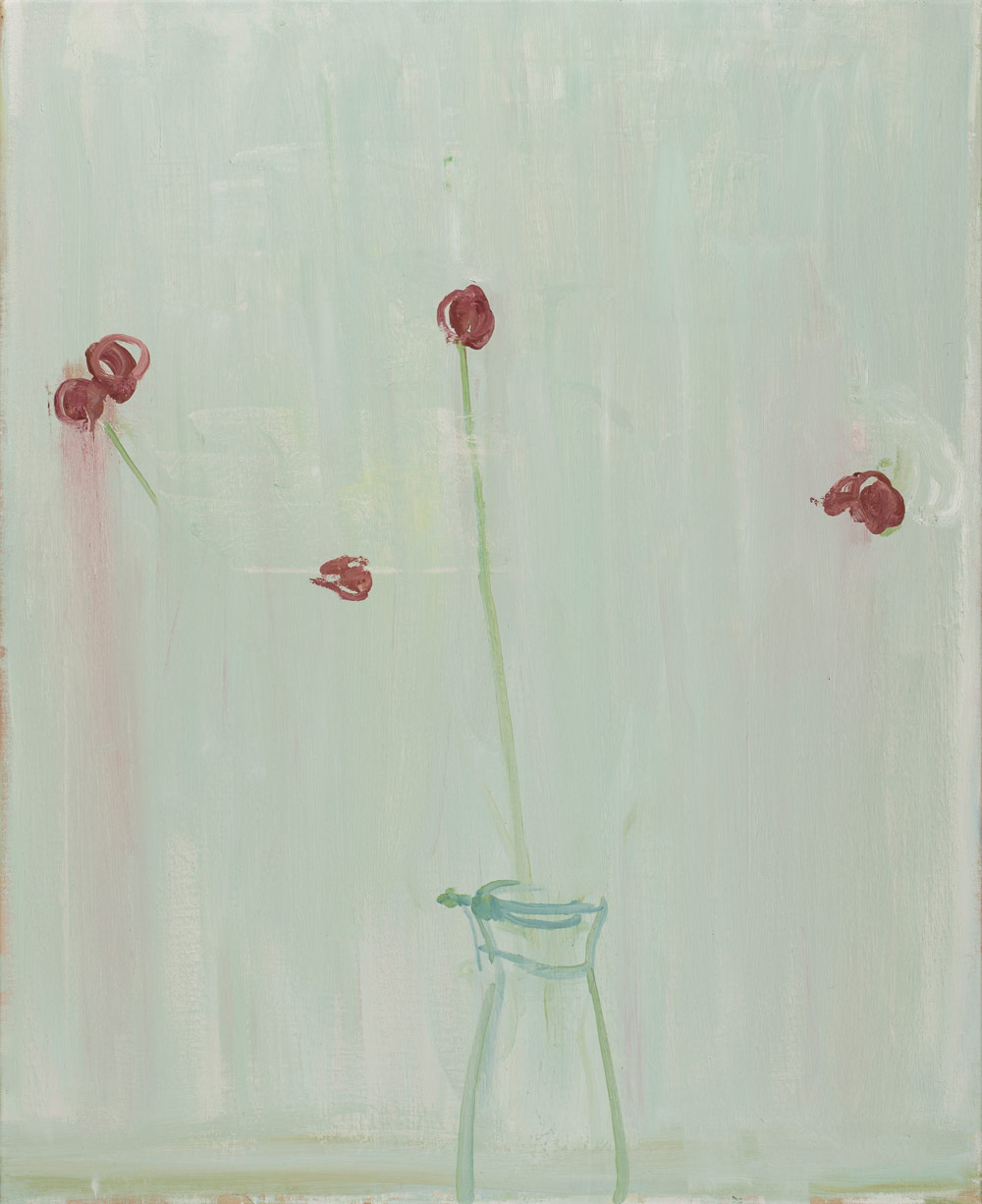“Maybe” a new exhibition by Pat Harris at Taylor Galleries comprises haunting paintings of longing and uncertainty …
How do you describe your distinctive style of painting?
I am essentially a figurative painter. My paintings contain figurative motifs: flowers, landscape, the coastline of North Mayo. I need to reference something outside myself in order to explore the possibilities of paint. The language of paint and its ability to convey emotion, space, light, and all that that contains, is something that never ceases to engage me. I have never really seen the border between what people call abstract and figurative painting, I have always just been fascinated by painting, by its power of suggestion, its ability to make the invisible visible, to make light and space tangible. Of late, I have attempted to paint rainbows – rainbows are just droplets of water and sunlight – I have tried not to illustrate a rainbow but rather to somehow trap it in paint and marks on a canvas. If my work seems distinctive maybe it’s because I walk a very thin line between abstraction and figuration.

Where and how do you work – I believe you have two homes in both Belgium and Co Mayo?
Yes, I graduated from the NCAD in 1978 and was subsequently awarded a scholarship to study painting at the Higher Institute of Fine Art Antwerp. It was an exciting time; the city of Rubens and only a short train journey from other major cities: Amsterdam, Paris, Cologne and so I got to visit many galleries.
As a young painter I learned most by visiting galleries and spending hours just looking at paintings. Paintings become a little transparent with age and if you look closely you can see, even experience, the layers that went before the final conclusion. You can often see the changes the painter made during the painting process. The old masters also struggled and fought to get the painting they were looking for. You see this in the late Rembrandts and it makes them even richer.

I met my wife and fellow artist Linda Ruttelynck in Antwerp. That was in 1981 and we decided to set up home in Antwerp. Later I was appointed professor of painting at the Academy in Antwerp and so our lives, home and studios were there. However, there was a longing to spend more time in Ireland. This came about through fellowships from the Ballinglen Arts Foundation in Ballycastle, Co Mayo. The marvellous thing about Ballinglen is that they have a system for returning fellows, of which we both took advantage. Spending summer after summer in Mayo, we slowly fell in love with its light, space and its people. By 2012 we had decided to spend, where possible, most of our time in Mayo, from where most of our work stems. Our home and studios were built in 2012. It took a huge investment to set up my studio with paints, brushes, easel, canvases etc but now it’s up and running, I find it stimulating to move between the two work places. I believe it prevents me from slowing down. The environment of North Mayo can be challenging: storms and rain, but it’s always glorious and never boring.

Do you work from memory or plein air?
When I first started working with the landscape of North Mayo it was very much about the topography of its coastline: its stacks, bog pools and headlands. I worked plein-air and over a number of sessions. If I had stopped working on a painting at 3pm or 4pm in the afternoon then I would return to the same square metre at the same time the following afternoon and continue where I had left off. I wanted the same light, the same time of day, and I would take it from there and over a number of sessions. However, now that I have a studio in North Mayo and can spend much more time in this landscape my concern, my subject matter, has moved away from the particular, from the topographic, to the universal. I now spend much more time walking this landscape, taking note, making small watercolours and taking photos. The sense of space, stillness and nothingness has become much more tangible and is now my subject matter. I now work in the studio, I cannot make these paintings plein-air. They are paintings based on memory, photos and watercolours. Recently while visiting the Turner exhibition at the National Gallery I discovered that Turner preferred to make his watercolours in his studio based on small sketches, notes and memory.
In May of this year I visited the Patrick Graham exhibition at the Hugh Lane, a truly wonderful show. Patrick has also spent much time in North Mayo and in an interview with the curator Michael Dempsey he talks about walking this landscape in the morning (between 4am and 5am) and experiencing the silvery silence of the light. He goes on to say that he only really started to understand Rothko through what he experienced in the vastness and stillness of North Mayo. These are observations, experiences, I understand and share: a sort of tangible nothingness, a vast and silvery silence. This is North Mayo which is now my subject matter. How do I paint this space, this silence, this nothingness? I cannot paint it through noting topographic elements and details, it’s bigger, greater, than that. My canvases have consequently become larger and the topographic elements slighter.

Tell us about your current exhibition entitled “Maybe” at Taylor Galleries?
This current show is very much about both the uncertainty and the longing that Covid-19 brought. All of the works, bar two, were made since the first lockdown.
I chose the title “Maybe” because I found it the most apt word to describe the sense of longing and uncertainty that I, and many people, felt during the various lockdowns. It became increasingly difficult, if not impossible, to visit places and loved ones and they seemed to be slowly becoming vague and distant memories. I painted flower motifs, sunsets and rainbows, not as sort of escapism, rather as motifs of longing and time.
From my studio location I can see Achill in the distance and as the sun goes down it sheds a warm glow across the bay towards Achill, transforming it into a landscape of memory. In a lot of these paintings the image doesn’t quite cover the whole surface of the canvas: it stops short of the edge and is framed by the layers of paint and time that went into its making. It’s the first time in my work that the image openly negotiates with the paint for a place on the canvas.

What do you enjoy most about what you do?
Painting is very much an adventure, without limits and definitions. The more you practice it, the less you know and the more impossible it becomes. This may sound like a recipe for pain and anxiety, but it is in fact a source of joy. As a painter you are always on the road, always going somewhere and never quite knowing where. You must accept your inabilities to do things but always with the hope that today it will work, today you will get somewhere.
When Pablo Casals, at 83-years-old, was asked why he still practiced the cello four to five hours a day he answered: “because I think I am making progress.” I have always used this as my motto.
Need to Know: “Maybe”, an exhibition by Pat Harris is on at Taylor Galleries, 16 Kildare Street, Dublin 2 until December 24; www.taylorgalleries.com.






